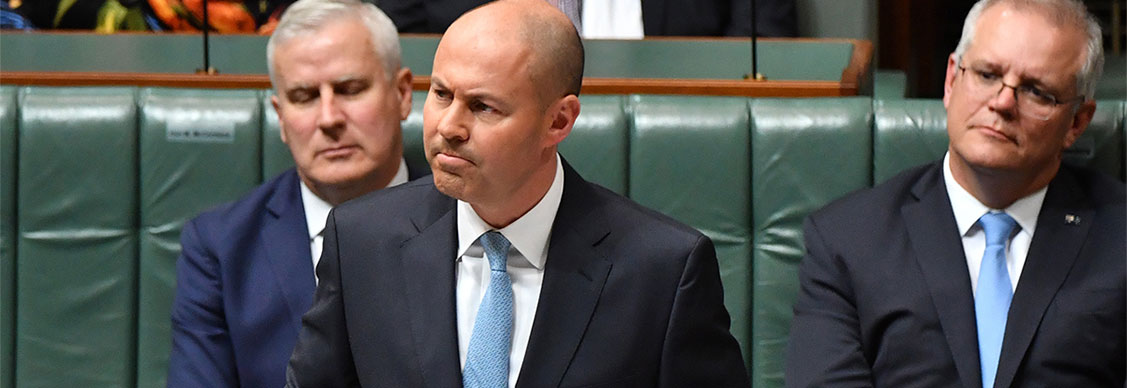Australian budget lends support to key real estate sectors
Infrastructure, housing and aged care get a spending boost amid economic recovery
Australia’s national budget is set to lend further support to real estate investors, with a better-than-expected deficit announced alongside spending boosts for infrastructure, housing, aged care and childcare.
Treasurer Josh Frydenberg painted a picture of improving finances in the latest budget, with an expected deficit of A$161 billion in the current financial year – A$52.7 billion better off than what was predicted six months ago. However, COVID-19 recovery measures will see Australia’s net debt skyrocket to A$980 billion in 2025 – 40.9 percent of GDP.
“The news of a better-than-expected deficit will be welcomed by potential property investors, and with Australia’s finances also improving they will see this economic and health stability as a key highlight when assessing property investment mandates,” says Ronak Bhimjiani, JLL research manager.
Higher-than-expected commodity prices and a sharp recovery in the labour market have contributed to a significant improvement in the deficit. However, the government’s focus is on an employment-driven economic recovery.
That path to recovery, combined with record low interest rates, has already been boosting investment in commercial property markets.
“Looking back to 2020, it was initially expected that foreign investment into Australian commercial property would be problematic due to COVID-19 restrictions limiting international travel as well as the zero-dollar monetary screening threshold on all acquisitions subject to the Foreign Investment Review Board (FIRB),” Bhimjiani says. “However, the attractiveness of Australian commercial property came through with offshore investors accounting for 44 percent of all transactions in 2020 compared to 34 percent in 2019.”
Looking for more insights? Never miss an update.
The latest news, insights and opportunities from global commercial real estate markets straight to your inbox.
Infrastructure funds
Recovery will continue to be supported by A$15.2 billion of new infrastructure spending, including a new Melbourne intermodal terminal which will activate Inland Rail in Melbourne. Both projects are due to complete in 2025.
The developments will shorten freight transport times from Melbourne to Brisbane via Sydney to 24 hours rather the current 30 hours.
“As well as directly benefiting industrial precincts in Melbourne’s north and west, this will make national and east coast distribution networks easier to operate from lower rental cost logistics facilities in Melbourne,” says Annabel McFarlane, senior research director, JLL.
Other major infrastructure spending, such as the A$229.4 million allocated towards the A$1.6 billion M12 motorway in western Sydney, is expected to encourage new industrial precincts needed to service a growing occupier base in Australia's capital cities.
The allocation also recognises the role of regional cities, McFarlane adds.
“The introduction of a hybrid working model has led to strong population growth in regional areas, and the budget has identified the importance of infrastructure projects to improve the connectivity between capital cities and emerging regional locations.”
Housing incentives
In housing, the government will be using superannuation incentives to both free up supply as well as stoke demand. First home buyers will be able to access A$50,000 from their superannuation funds for owner-occupied property purchases, while single parents will be able to put a deposit down of only two percent towards purchases.
However, some analysts are questioning the wisdom of further measures to boost an already hot housing market.
“There is already plenty of stimulus in the housing market from record low interest rates, HomeBuilder (a government grant of A$25,000 for owner-occupiers to build a new home or substantially renovate their existing home) and existing first homebuyer incentives, which are already strongly feeding house prices,” says Leigh Warner, JLL’s head of residential research.
“I personally would like to see the government implement more supply-side strategies that free up barriers and costs to development and ultimately help affordability by suppressing rather than feeding dwelling prices,” he says.
However, Warner described as “positive” a measure allowing older Australians to top up their superannuation by up to A$300,000 from the sale of their property if they downsize from their family homes.
“This should both create some demand in the apartment and aged care sectors, while also freeing up larger inner and middle-ring housing stock for families which is currently in very short supply,” he says.
Investment Opportunities
Aged care spending
Increased spending in aged care, defence and childcare could also attract greater investment into alternative real estate. The government’s budget centrepiece, A$18 billion spending in the aged care sector, follows a royal commission into aged care in 2018 which found existing funding insufficient.
There is A$7.8 billion going towards residential aged care design and planning to better meet the needs of senior Australians. New design standards were among the 140 recommendations in the royal commission.
“We’d expect to see better use of technology, enhanced arrival and activity areas, and spaces where better quality care with greater numbers of staff can be achieved,” says Andrew Lowther an aged care specialist in JLL’s project and development services. “Not only will new standards enhance the experience of residents, but they’ll also hold operators to account should they fall short.”
Contatta Ronak Bhimjiani
JLL research managerWhat’s your investment ambition?
Uncover opportunities and capital sources all over the world and discover how we can help you achieve your investment goals.




